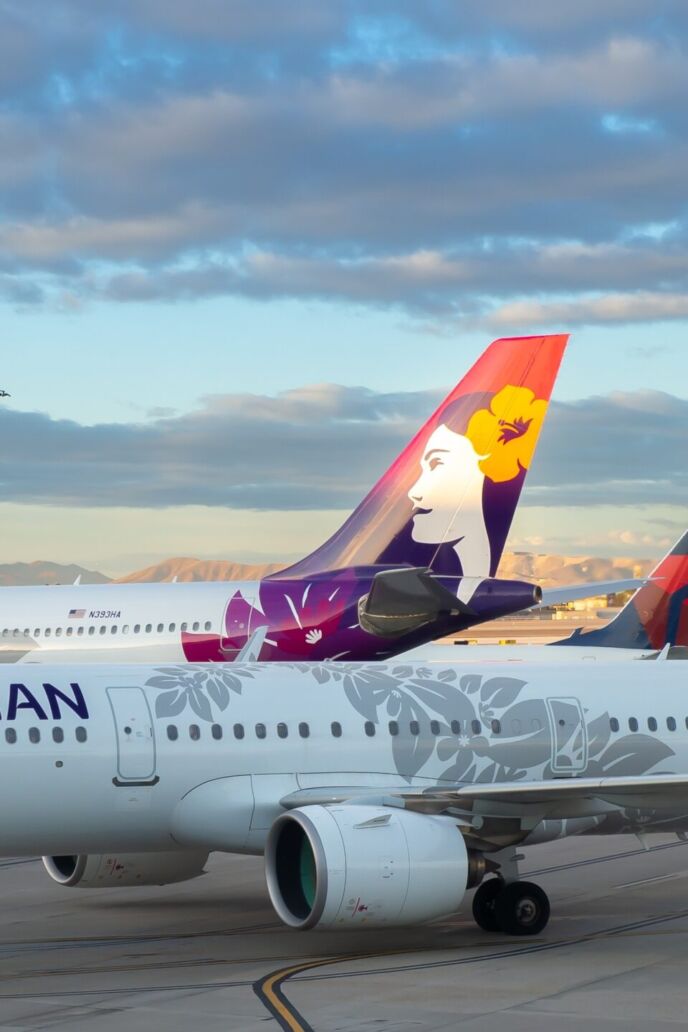If you’re planning a trip to the islands with Hawaiian Airlines anytime soon, there’s a new policy you absolutely need to know about. As of May 15, 2025, the airline has rolled out a new no-show policy that could end up costing you—big time—if you’re not careful.
Let’s break it down, look at how it impacts travelers, and discuss how you can avoid getting caught off guard.
Contents
Why Did Hawaiian Airlines Change Its No-Show Policy?
Part of a Bigger Merger Picture
In late 2024, Hawaiian Airlines was acquired by Alaska Airlines, and now, as part of the Alaska Air Group, they’re aligning policies across both brands. This new no-show policy reflects industry-standard practices and mirrors those already in place at Alaska Airlines.
From an operational standpoint, the airline says this move improves efficiency, seat utilization, and revenue management by cutting down on empty seats left by passengers who simply don’t show up.
Industry-Wide Trend
This isn’t just a Hawaiian Airlines thing. Over the past few years, many U.S. carriers have taken a stricter stance on non-refundable fares. It’s all part of an effort to get travelers to commit or pay for flexibility upfront.
As someone who works in the travel industry, I see this as a calculated shift. Airlines are doing what many businesses do in competitive, high-cost environments: protecting their bottom line.
What Exactly Is the New No-Show Policy?
Automatic Itinerary Cancellation
The biggest bombshell? If you miss your flight without canceling or changing your reservation beforehand, your entire itinerary will be canceled. That includes all connecting and return flights. So, if you no-show on your Honolulu departure, don’t expect to catch your flight back from Maui. It’s gone.
No Refunds or Travel Credits
Whether you paid with cash or frequent flyer miles, if your ticket is non-refundable, you lose everything. There’s no travel credit, no rebooking, and no miles reimbursement. Even elite status won’t help you. Frequent flyers under HawaiianMiles or Alaska’s Mileage Plan aren’t exempt.
Refundable Tickets Are the Exception
If you bought a refundable ticket, you’re in the clear—sort of. Those fares are still subject to their original rules, which usually allow changes or cancellations (sometimes with a fee).
How Does This Affect You as a Traveler?
Financial Risk for Budget Travelers
Most travelers opt for non-refundable fares to save money. Now, if your plans change suddenly or you simply miss your flight due to a delay, traffic, or an emergency, you could lose every dollar you spent. That’s a huge shift from previous policies where missing one segment might still allow rebooking the rest.
Frequent Flyers Aren’t Spared
Even if you’ve been flying with Hawaiian for years and have elite status, you won’t get a pass under this new policy. Elite members used to enjoy perks like flexible rebooking or mileage credits. Not anymore.
Families and Group Travelers Should Take Note
Traveling with kids? In a large group? The stakes are even higher. One delay can cause a domino effect, leading to a forfeited itinerary. That’s a lot of money and stress on the line.
From my perspective, this is where the policy feels especially harsh. Travel isn’t always predictable—especially family travel.
Real-Life Scenarios That Could Cost You
Scenario 1: You Hit Traffic on the Way to the Airport
You’re 20 minutes late and miss check-in. Under the new policy, you lose your outbound flight and your return flight. No refunds.
Scenario 2: You Oversleep on Vacation
We’ve all been there—late night luau, too many mai tais. But if you miss your morning island-hopper, your return flight gets canceled too.
Scenario 3: You’re Flying Standby on an Earlier Flight
Even if you intend to fly and just switch flights, if you don’t properly modify your reservation, you’re technically a no-show for your original booking.
What You Can Do to Avoid Losing Out
Cancel or Modify Before Your Flight
Even if you’re not 100% sure you’ll miss your flight, cancel or change your booking before departure. Do it online, through the app, or by calling the reservations line. This one step can protect your funds or miles.
Consider Booking One-Way Flights
Some savvy travelers are starting to book separate one-way tickets instead of round-trips. That way, if you miss one leg, you don’t lose the entire booking.
Buy Refundable Fares or Add Travel Insurance
Yes, refundable fares are more expensive—but they may be worth it for peace of mind. Alternatively, consider travel insurance that covers missed flights.
What Are Other People Saying?
Mixed Public Sentiment
Public response to Hawaiian Airlines’ new no-show policy has been varied. On one hand, some travelers understand the reasoning behind the move. They believe the policy promotes accountability, ensures better seat utilization, and aligns Hawaiian with other major U.S. carriers.
However, many others feel the policy is too rigid—especially for travelers dealing with emergencies, traffic delays, or unpredictable schedules. Consumers have expressed concern on social media and travel forums about the risk of losing their entire booking, especially when using non-refundable tickets or frequent flyer miles.
As reported by Fox Business, Hawaiian Airlines encourages passengers to proactively modify their reservations to avoid financial loss. Still, that hasn’t softened criticism from those who feel the policy puts too much burden on the traveler.
From my industry perspective, the policy makes operational sense—but I believe there’s room for more flexibility, especially for long-time customers and families dealing with unforeseen situations.
It’s Time to Rethink How We Book Flights
Travel has changed. Between pandemic-era adjustments and a wave of airline mergers, flexibility now comes at a cost. This new no-show policy is just another reminder that we, as travelers, need to be smarter and more proactive.
For Hawaii visitors, the consequences are particularly steep. Many island-hopping itineraries depend on timing and smooth transitions. One missed flight could wreck an entire vacation. So don’t leave anything to chance.
My advice? Know the rules. Build wiggle room into your plans. And if your schedule’s tight or unpredictable, splurge on that refundable fare.
Because while paradise is always worth it, getting there shouldn’t cost you more than it has to.
TL;DR: Quick Policy Recap
- New Policy Effective: May 15, 2025
- If You No-Show: All flights in your reservation are canceled
- Non-Refundable Tickets: No credit or refund; miles forfeited
-
Refundable Tickets: Governed by existing fare rules
- Who It Affects: Everyone, including elite status holders
Planning ahead has never been more important. Whether you’re island-hopping, joining a tour, or simply soaking up the sun, make sure your travel plans are as smooth as possible—starting with your flight. And once you land, we’re here to help you make the most of your Hawaii vacation with unforgettable tours and activities across the islands. Because your time in paradise should be spent exploring, not worrying about what you missed.
Mizhelle
Marketing geek with a penchant for somewhat strange, slightly curious destinations.




